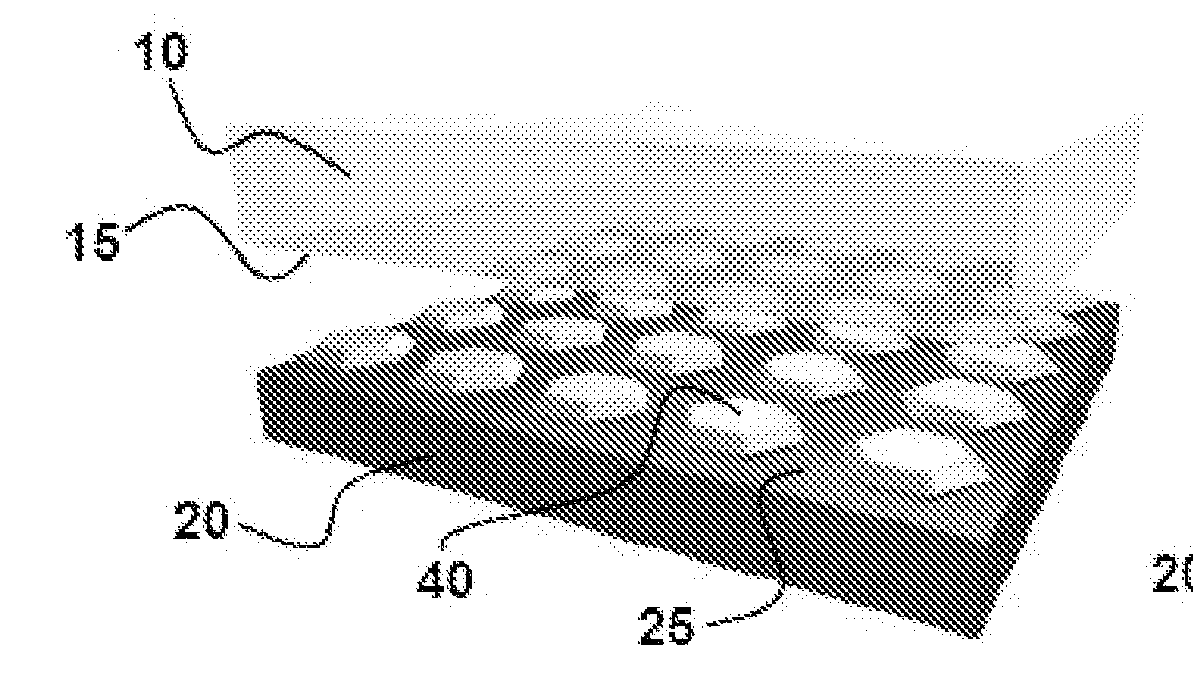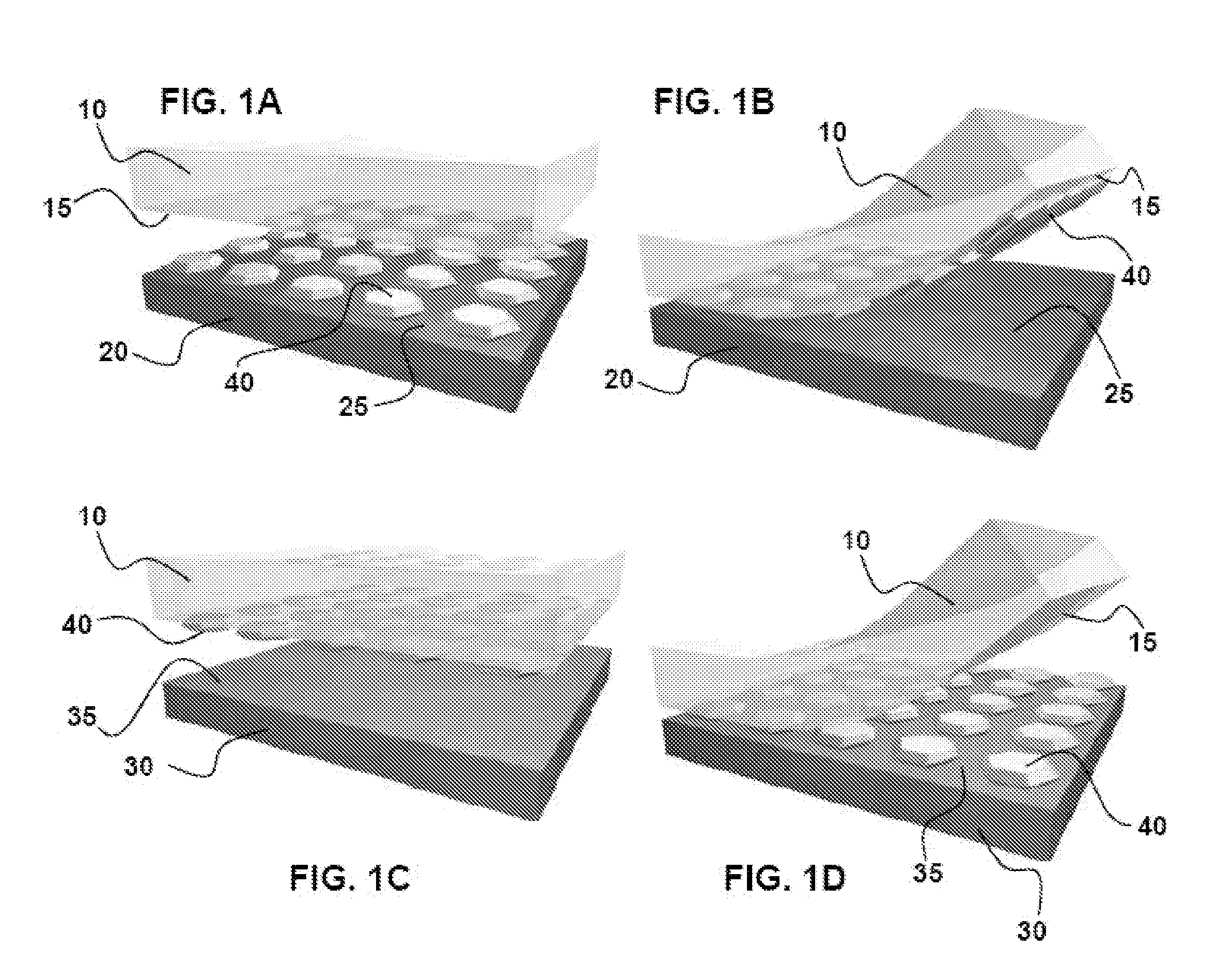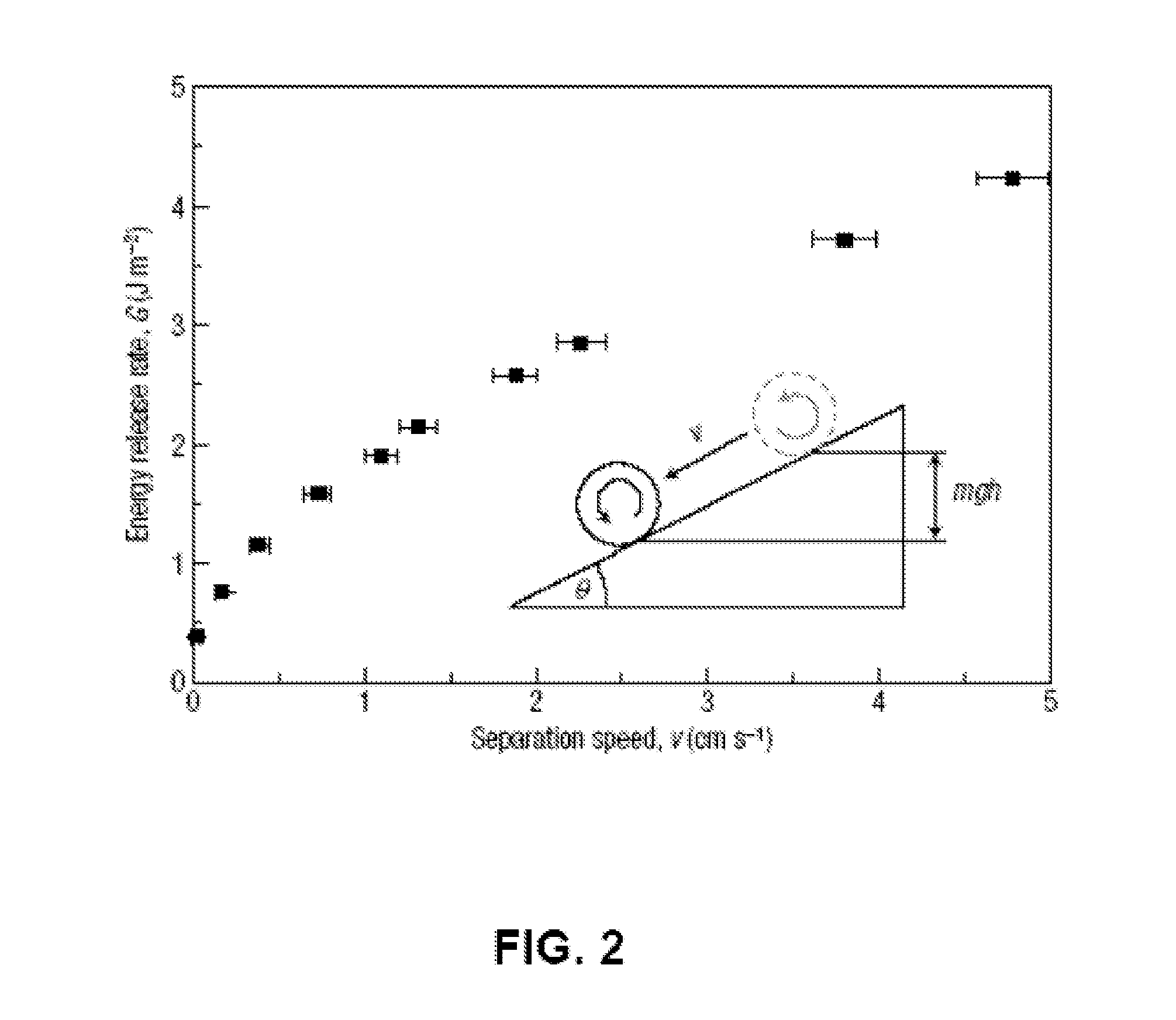Pattern Transfer Printing by Kinetic Control of Adhesion to an Elastomeric Stamp
- Summary
- Abstract
- Description
- Claims
- Application Information
AI Technical Summary
Benefits of technology
Problems solved by technology
Method used
Image
Examples
example 1
Transfer Printing onto Semiconductor Wafers
[0113]The present invention encompasses methods that transfer prints a plurality of structures from a donor substrate surface to a receiving substrate surface. For example, FIG. 4 shows a 30 mm×38 mm GaAs wafer printed with an array of I-shaped silicon microstructures (see inset) by a single elastomeric stamp. In a single step, an inked elastomeric stamp prints the pattern in ambient conditions directly onto a 100-mm GaAs wafer. This array contains about 24,000 microstructures; the yield of the entire process, including micromachining, pick-up and printing, is more than 99.5% (corresponding to fewer than 100 microstructures missing from the array). Particles on the surface of the receiving substrate are typically the most significant cause of defects. With care, including careful processing and handling of the receiving substrate, printing efficiency can approach 100%.
[0114]Unlike wafer-bonding approaches to semiconductor materials integrat...
example 2
Transfer Printing of Sheet-Like Geometries
[0118]The strong adhesion of features to the stamp at high separation rates is essential to achieve reliable, high-yield printing of the classes of objects illustrated in Example 1. This adhesion can be sufficiently strong, in fact, to remove material structures that are ionically bonded to the donor substrate along their entire lengths. FIG. 11 shows, as an example, a pattern of thin high-quality muscovite (grade V-1 mica) printed by removing a stamp in contact with the mica at sufficiently high separation rates to cleave patterned ribbons from a donor substrate of bulk mica. PDMS stamps can also cleave sheets from unpatterned grade V-1 mica or graphite (FIG. 12) and lift off mica sheets bonded to SiO2, indicating that the stamp-microstructure interface is strong enough at high separation rates to remove structures bound to a donor substrate at least as strongly as 6 J / m2. The high adhesive strength present at high separation rates reduces ...
example 3
Transfer Printing of Globular Geometries
[0119]The transfer devices disclosed herein can pick-up and release, for example, highly non-planar, globular structures, such as silica microspheres (FIG. 13) and grains of pollen (FIG. 14), which have very small areas of contact to rigid receiving substrates.
PUM
| Property | Measurement | Unit |
|---|---|---|
| Length | aaaaa | aaaaa |
| Length | aaaaa | aaaaa |
| Length | aaaaa | aaaaa |
Abstract
Description
Claims
Application Information
 Login to View More
Login to View More - R&D
- Intellectual Property
- Life Sciences
- Materials
- Tech Scout
- Unparalleled Data Quality
- Higher Quality Content
- 60% Fewer Hallucinations
Browse by: Latest US Patents, China's latest patents, Technical Efficacy Thesaurus, Application Domain, Technology Topic, Popular Technical Reports.
© 2025 PatSnap. All rights reserved.Legal|Privacy policy|Modern Slavery Act Transparency Statement|Sitemap|About US| Contact US: help@patsnap.com



